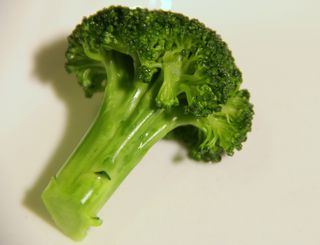
St. Patrick's Day Can Help Your Kids Eat Veggies (Op-Ed)

Dr. Wendy Anderson-Willis is a pediatrician at Nationwide Children's Hospital. She contributed this article to Live Science's Expert Voices: Op-Ed & Insights.
This time of year, green seems to be everywhere — from the warmer weather that encourages spring blooms, to St. Patrick's Day, to Earth Day. Let this also be a reminder that green fruits and vegetables should also be featured on your child's dinner plate. What have you done lately to encourage your child to eat more green fruits and vegetables?
From vitamins to folate to potassium, fruits and vegetables provide vital nutrients and help keep everyone healthy. Yet so many children don't eat these crucial foods, and their diets suffer from it. I'm sure there are plenty of parents who wish their children would eat broccoli just once, instead of another round of french fries. While this isn't a new problem, it certainly is one that isn't getting a lot better.

A 2009 study from The Ohio State University showed that only 50 percent of children ages 2 to 5 met the recommendation for fruit intake, and only 22 percent met the recommendation for vegetable intake. According to the Centers for Disease Control and Prevention (CDC), boys and girls in this age group should be eating a minimum of one cup of fruits and a cup of vegetables per day. The numbers only get worse from there, as the older the children got, the fewer fruits and vegetables they ate. The good news is, it's possible to get your children on the right track. With just a few steps, you can get your children to add more color to their plate.
Start by setting a good example. No, I don't expect you to start eating every fruit and vegetable, but if your child hears you say something like, "Mommy doesn't like broccoli," or "Daddy only eats red fruits," then he or she is going to start thinking it's OK to only eat certain types of foods. Keep an open mind, and try foods you don't normally eat in order to encourage your children to do the same. If they decide it isn't their favorite, you can also try asking them to just take one bite, or take as many bites as their age. Reward their behavior when they do try it.
Try having one night a week when you only serve vegetables and fruits. Some families have instituted "Meatless Mondays" in their house. Not only is it a way to incorporate more fruits and vegetables, but it also can help families save a little bit of money on their grocery bills.
When deciding what to make for lunch or dinner, it's important that you think about how to keep the plate looking interesting and colorful. Think about how you feel when you eat. Besides taste and smell, the visual component of your food is an important aspect of mealtime. Try to see how many colors you can have on your plate.
Sign up for the Live Science daily newsletter now
Get the world’s most fascinating discoveries delivered straight to your inbox.

However, this is not the time to force your child to finish all of the food on his or her plate. Yes, fruits and vegetables are healthy , but if you force your child to eat everything on the plate, you run the risk of setting your child up for bad behavior with food. This could lead to problems with food later in life, whether it is an eating disorder or obesity. Mealtime should be a chance for your whole family to sit together and enjoy family time. It's often not the best time for your child's attention span, or for you to launch into a large nutrition debate.
If you're encountering struggles in getting your children to eat their greens, you're not alone. And don't worry — most children are picky eaters; it's almost a rite of passage into adulthood. Relax, most children who go through an extremely picky eating stage will grow out of it.
Parents should know that eating these fruits and vegetables with your children will get them on the path to a healthy life. It's easy to start when a holiday or theme can help you convince them to do it. So start with St. Patrick's Day, and show your children that green is good.
The views expressed are those of the author and do not necessarily reflect the views of the publisher. This version of the article was originally published on Live Science.












